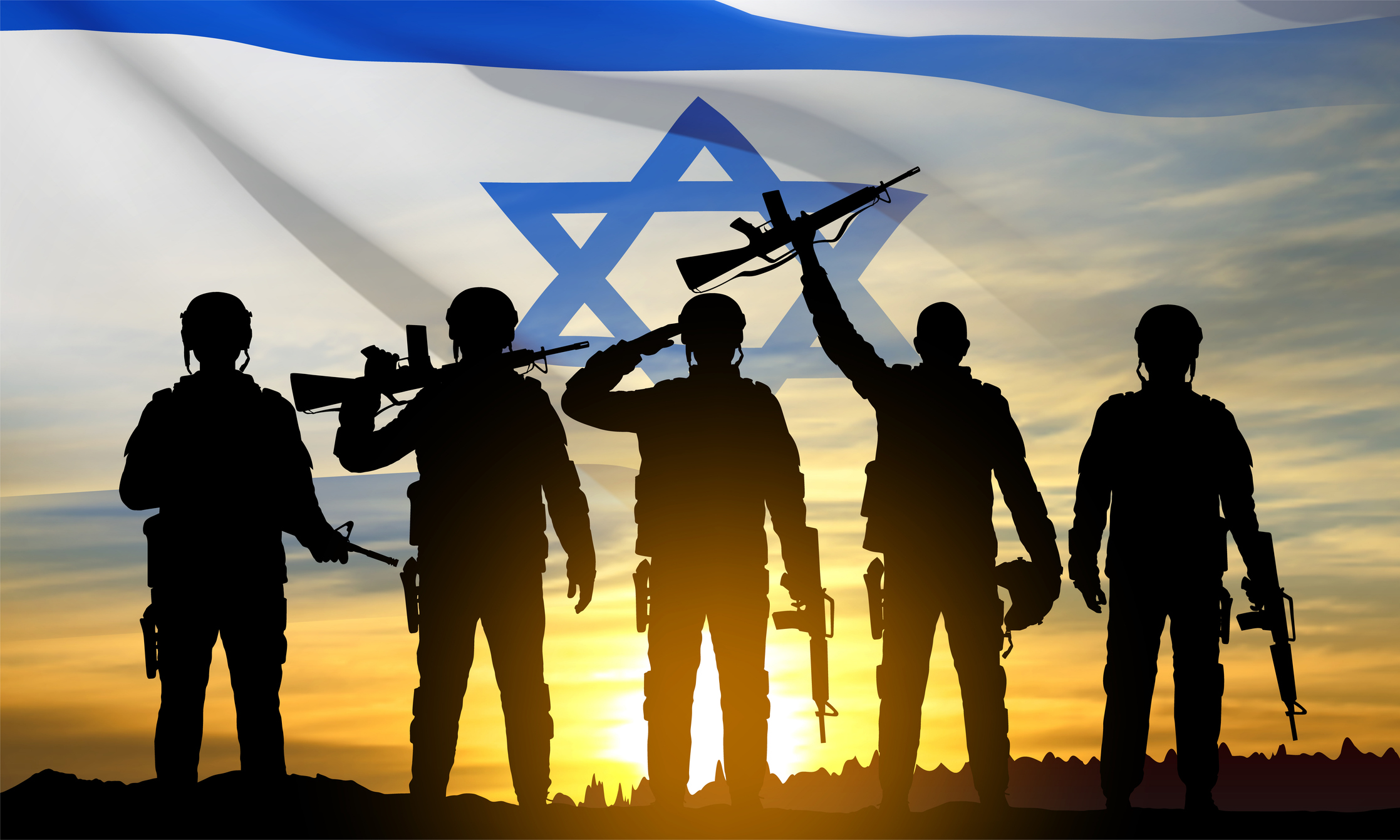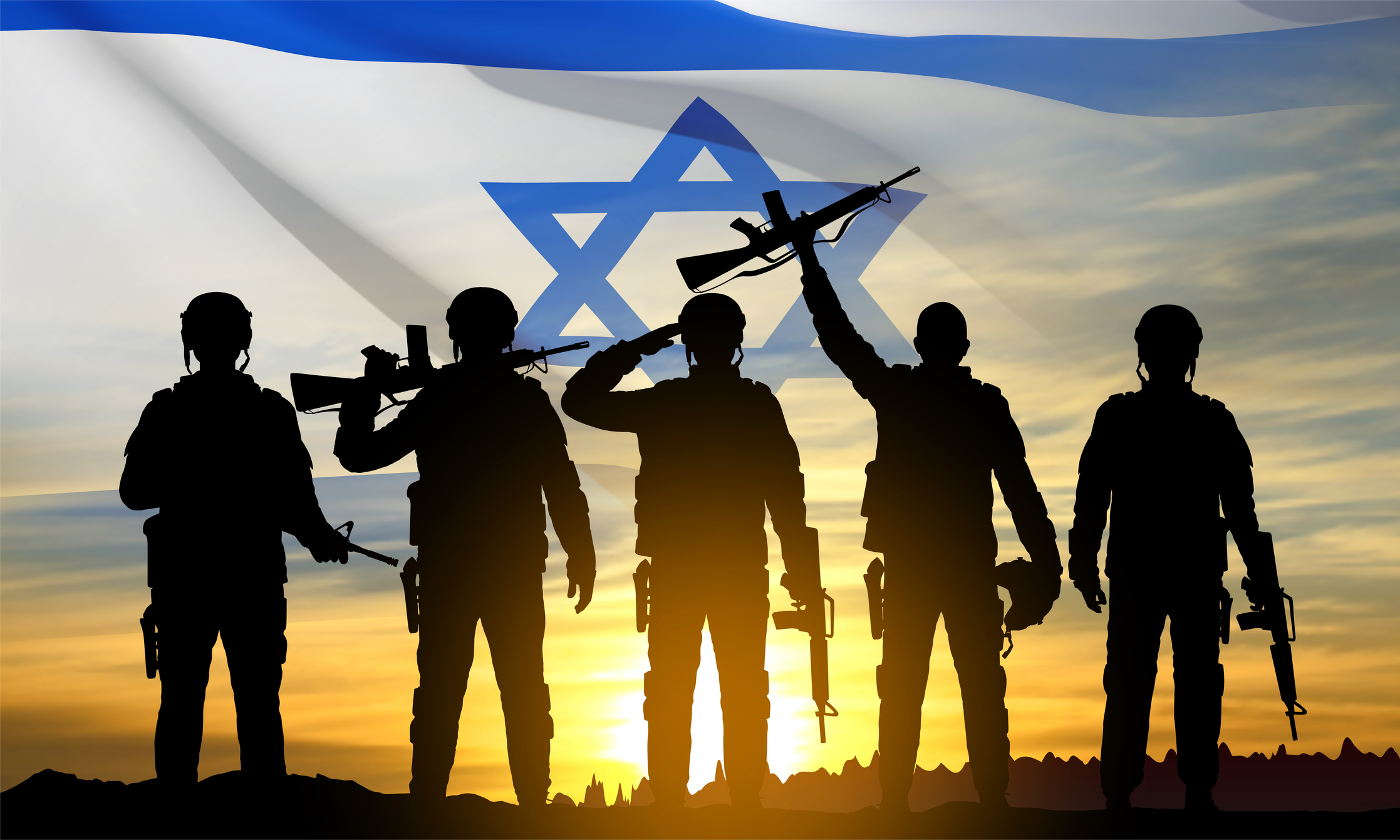
Emerging Aerospace Technologies
Mon, 28 Dec 2020 | Reading Time: 9 minutes

The one who controls aerospace controls the Planet Earth. Rising China and its investments in aerospace, and last year’s air clash between the Indian Air Force (IAF) and Pakistan Air Force (PAF) in the riposte after the Balakot strikes, have rekindled interest in fighter aircraft technologies and air combat capabilities. Combat aviation has not only become the most preferred means of prosecution of war but has seen the fastest growth of technology. Many features of airborne platforms such as agility (speed, manoeuvrability), accurate weapon delivery, the capability to operate in all weathers and at night, and be secure from enemy air and surface threat remain. Aircraft and systems performance is increasing rapidly. New domains have got added. Artificial Intelligence (AI) is not only improving manufacturing but also decision making at all levels including in combat. Additive 3D manufacturing, electric propulsion, hypersonic platforms and weapons are bringing change. Electronic warfare with great cyber action has become more relevant in network-centric warfare. The already thin line between space and earth’s atmosphere has got further blurred and more crafts are transiting between them in the routine. Small satellites in large numbers can be launched at short notice. Unmanned swarms are coordinating with manned platforms for all kinds of missions. Air Engagements are becoming farther and farther. Therefore there is a need for long-range sensors and weapons that can operate in an adverse electronic environment. Aircraft engines are becoming more powerful and efficient. Laser and Directed Energy Weapons require greater power source onboard. Let us look at each of these technologies.
Fifth Generation Aircraft Technologies
The fifth-generation was ushered in by the Lockheed Martin/Boeing F-22 Raptor in late 2005. These aircraft are designed from the start to operate in a network-centric combat environment and to feature extremely low, all-aspect, multi-spectral signatures employing advanced materials and shaping techniques. They have multifunction AESA radars with high-bandwidth low-probability of intercept. Infra-Red Search and Tracking (IRST) and other sensors are fused in for Situational Awareness and to constantly track all targets of interest around the aircraft’s 360 degree bubble. Avionics suites rely on extensive use of very high-speed integrated circuit (VHSIC) technology and high-speed data buses. Integration of all these elements is claimed to provide fifth-generation fighters with a “first-look, first-shot, first-kill capability”. In addition to its high resistance to ECM, they can function as a “mini-AWACS”. Integrated electronic warfare system, integrated communications, navigation, and identification (CNI), centralized ‘vehicle health monitoring’, fibre-optic data-transmission, and stealth are important features. Manoeuvre performance is enhanced by thrust-vectoring, which also helps reduce take-off and landing distances. Super-cruise is inbuilt. Layout and internal structures minimize RCS over a broad bandwidth of frequencies. To maintain low signature primary weapons are carried in internal weapon bays. Stealth technology has now advanced to where it can be employed without a trade-off with aerodynamics performance. Signature-reduction techniques include special shaping approaches, thermoplastic materials, the extensive structural use of advanced composites, conformal sensors, heat-resistant coatings, low-observable wire meshes to cover intake and cooling vents, heat ablating tiles on the exhaust troughs and coating internal and external metal areas with radar-absorbent materials and paints. These aircraft are very expensive. F-22 costs around US$150 million. Lockheed Martin F-35 Lightning II fighters will cost on average US$ 85 million due to large scale production. Other fifth-generation fighter development projects include Russia’s Sukhoi PAK FA, now SU-57. India is also developing the Advanced Medium Combat Aircraft (AMCA). China’s 5th generation fighter Chengdu J-20 is flying since January 2011 and combat units started inducting in early 2018. The Shenyang J-31 first flew in October 2012. The program has received government funding and is being sought after by both Chinese air force the PLAAF and Naval Aviation PLANAF.
Heavy Fighters – Quite Relevant
There is a continued decision conflict about light vs. heavy fighters. Light aircraft are relatively simple with only essential features, and lower cost. Light fighters generally feature a high thrust-to-weight ratio, high manoeuvrability, and high reliability. Intentional simplicity also allows buying larger numbers to out-number the enemy in the air under combat conditions. Modern single-engine light fighters include F-16, JAS-39 Gripen, and Tejas LCA, all being significantly lower in cost. Larger fighters provide the opportunity for more technology, longer range radars, and heavier weapons, but are much more expensive and often unaffordable.
Future is Unmanned
Unmanned Aircraft technologies are already proven, and it is emerging that the future is unmanned. The world is at a real-time transition. Electric and Hybrid autonomous systems have a great future. These will include drones to space vehicles. AI will play a huge role in these weapons. Mixed formation will be the way ahead. Some see the JSF as the last manned fighter/bomber. Solar Powered Unmanned Aerial Vehicles (UAVs) are already flying. Dual-use optionally manned aircraft are under development. Unmanned aircraft are already taking-off and landing by themselves including on the moving aircraft carrier (Northrop Grumman X-47B). Autonomous air refuelling is a reality. Lockheed Martin’s UCLASS drone ‘Sea Ghost’ looks rather like a stealth bomber and is expected to carry 1,000-pound class weapons. USAF has already modified F-4s and F-16s to fly unmanned. In France, Dassault leads a multi-nation delta wing UCAV ‘Neuron’ of the size of Mirage 2000. UK has a Strategic Unmanned Air Vehicle (SUAVE) program ‘Taranis’. This will be a supersonic autonomous stealth bomber with intercontinental range. The USA is also working on Strike Bomber that is likely to be optionally manned.
Evolving New Technologies
Artificial Intelligence (AI), smart structures, and hybrid systems will dictate the future. Demand for streaming high-quality data requires bandwidth, which involves innovating sensor/processing systems. Network-centric payload processing units enable on-board data fusion before sending to digital links. Gallium Nitride (GaN) is a semiconductor material that is more efficient, easier to cool, and improves reliability for radars. Any system must be designed to maintain a competitive advantage in an austere budget environment. The Passive Aero-elastic Tailored (PAT), a uniquely designed composite wing will be lighter, more structurally efficient and have flexibility compared to conventional wings. This wing will maximize structural efficiency, reduce weight and conserve fuel. Hypersonic cruise, fuel cell technologies, hybrid sensors, improved human-machine interface using data analytics and bio-mimicry, a combination of materials, apertures and radio frequencies that ensure survival in enemy territory are under development. Things will be built faster, better and more affordably, using 3D printing yet ensuring quality and safety standards. Additive 3D manufacture creates a world with spare parts on demand, faster maintenance and repairs, more effective electronics, and customized weapons. The development of a hypersonic aircraft would forever change the ability to respond to conflict. Nano-materials will control sizes, shapes and compositions, and significantly reduce weight yet create stronger structures for air and spacecraft, yet drive down costs.
New Engine Technologies
Future aircraft are expected to use advanced engines with Adaptive Versatile Engine Technology for longer ranges and higher performance which should be ready by 2030 when fighters would be ready. The newer engines could vary their bypass ratios for optimum efficiency at any speed or altitude. That would give an aircraft a much greater range, faster acceleration, and greater subsonic cruise efficiency. The ability to super-cruise may not be a critical requirement, but it will likely be able to with this engine type.
Aerial Weapons
Future weaponry would utilize scramjets for the production of faster missiles. Boeing’s X-51A Wave-rider scramjet remains in development as it hopes to reach hypersonic speeds approaching Mach 6, a speed at which a missile could not be stopped by conventional air defence technology. Continued experiments with DEW and lasers, used for defensive as well as offensive measures, delivering effects at the speed of light, are also likely to shape precisely what sixth-generation fighters are equipped with. New aircraft will be as much about reusable weaponry (lasers) as it is about expendable weaponry. The solid-state laser systems defensively create a sanitized sphere of safety around the aircraft, shooting down or critically damaging incoming missiles and approaching aircraft with the laser turrets. Even attacking targets on the ground with pinpoint precision, or shooting down ballistic missiles and other traditional targets are possibilities. USAF is developing a new air-to-air missile, dubbed the Small Advanced Capabilities Missile (SACM) for the 2030s. SACM would promise an improved solid rocket motor having synergized control enabled by combined aero, attitude control and thrust vectoring. The missile will have improved ‘high off-boresight’ for rear hemisphere kills and ‘lower cost per kill.’ The missile would also incorporate energy optimizing guidance, navigation and control. The Miniature Self-Defence Munitions (MSDM), will enhance future platforms self-defence capability, without impacting the primary weapon payload. A sixth-generation missile could replace AMRAAM. A survivable, long-range missile with combined air-to-air and air-to-ground capabilities is being evolved. The range would be a big factor to counter potential adversaries with Chinese PL-15. It will be multiband, broad-spectrum – which aids it in survivability and reaching the target. No aircraft is invisible, and using standoff weaponry early in an air campaign to open up weaknesses in an enemy’s air defence will be required even for 5th generation fighter aircraft to operate in the area without assuming excess risk.
Large Platform Stealth
Fighters like the F-35 and F-22 may be stealthy, but their support assets, like Flight Refuelling Aircraft (FRA) and AWACS are not. There will be a need for low observable tankers, transports, and bombers as these will be targeted. USAF could adopt the new stealth bomber design for the stealth tanker role. It will also give the ability to insert special operations teams deep behind enemy lines via a stealthy high-altitude penetrating transport.
Future Pilot Support Systems
Many new technologies have improved pilot endurance for long flights. On-board Oxygen generation (OBOX) now obviates the need to have oxygen cylinders and increases endurance. Smart drugs and hybrid supplements increase endurance, stamina, physical strength, and alertness levels and regulate the sleep and waking hours and the pilot could keep awake for longer durations. Modified genes will convert fat into energy to last for long flights. A trans-dermal nutrient delivery system will provide just enough nourishment to keep the body going. Pilot’s physical and mental state will be monitored by sensors to check overload, physiological stress and the same transmitted to the ground controller. Light-weight helmets with visor displays for integrated information from all sensors for weapon cueing and shoot command. Fire-resistant bullet-proof clothing is in use. Voice-activated commands for multiple aircraft functions. Secure data-links aided commands will allow radio silence. Research is being done for contact lens-mounted displays that could focus information from drones and satellites directly into eyeballs, and helmets that could enable to communicate telepathically. Next-generation helmets will pick up vibrations from the skull and transmit sound directly into the head instead of using traditional microphone-earpiece combine. To fit the body contours, flexible display screens would be of easy to bend synthetic material other than glass.
U.S. Sixth Generation Fighter Programs
US Air Force (USAF) and US Navy (USN) are working in coordination with US Defence Advanced Research Projects Agency (DARPA) and have been defining their requirements of a sixth-generation fighter. DARPA under it’s the “Air Dominance Initiative” to develop prototype X-plane. USAF has announced that it will pursue “a network of integrated systems disaggregated across multiple platforms” rather than a “sixth-generation fighter” in its Air Superiority 2030 plan. USAF seeks a fighter with “enhanced capabilities in areas such as reach, persistence, survivability, net-centricity, situational awareness, human-system integration and weapons effects. The future system will have to counter adversaries equipped with the next-generation advanced electronic attack, sophisticated integrated air defence systems, passive detection, integrated self-protection, directed energy weapons (DEW), and cyber-attack capabilities. It must be able to operate in the anti-access/anti-denial environment that will exist in the 2030–50 timeframe. A USAF General remarked that if next-generation air dominance capabilities came from pressing “a single button on a keyboard that makes all our adversaries fall to the ground” it would be acceptable.
There is a need to follow a path of risk reduction by prototyping, technology demonstration, and systems engineering work before the creation of an aircraft starts. The sixth-generation strike capability not as just an aircraft, but a system of systems including communications, space capabilities, standoff, and stand-in options. The fighter may be larger and more resembling a bomber than a small, manoeuvrable traditional fighter. Small size, high speed, and manoeuvrability may be less relevant and easier to intercept. Fighter significantly larger can rely on enhanced sensors, signature control, networked situational awareness, and very-long-range weapons to complete engagements before being detected or tracked. Larger planes would have a greater range that would enable them to be stationed further from a combat zone, have greater radar and IR detection capabilities, and carry bigger and longer-range missiles. Heavily armed combat aircraft could link itself to the development of the Long Range Strike Bomber.
Other Sixth Generation Programs
France and Germany have awarded a Joint Concept Study (JCS) to Dassault Aviation and Airbus for the Future Combat Air System (FCAS) programme. Both countries want to secure European sovereignty and technological leadership in the military aviation sector for the coming decades beyond 2040. The study should complete by February 2021. The BAE Systems Tempest is a proposed stealth fighter aircraft concept to be designed and manufactured in the United Kingdom for the Royal Air Force. It is being developed by a consortium consisting of the UK Ministry of Defence, BAE Systems, Rolls-Royce, Leonardo and MBDA, and is intended to enter service from 2035 replacing the Eurofighter Typhoon. Tempest will be a sixth-generation fighter incorporating several new technologies. BAE Systems is planning to approach India for collaboration for the design and manufacture of the Tempest. Tempest could be optionally manned and have swarming technology to control drones. China is still evolving its J-20 and J-31. Some Chinese sixth-generation aircraft (J-XX) is referred to as Huolong (Fire Dragon). Russian media has reported an aircraft designated J-28 as China’s next-generation fighter. But as on date, China has serious limitations on the radar, avionics, and engine technologies. China planned to field it in the 2025-2030 time frame. In Russia, the FGFA Sukhoi Su-57 is just being inducted, and work is on for its sixth generation aircraft Mikoyan MiG-41. Japan’s Mitsubishi F-3 sixth-generation fighter would be based on the concept of aircraft informed, intelligent and instantaneous, technologies for which are under testing on the Mitsubishi X-2 Shinshin test-bed aircraft.
Space and Military Interest
Notwithstanding the various space related treaties, space is already being used for supporting the war. Military uses include satellite-based systems for Intelligence Surveillance and Reconnaissance (ISR), navigation and targeting, communications. The ultimate desire of a space-power is to dominate the use of space and have space-based systems that allow the destruction of enemy targets in space and on earth, and deny the enemy full access to space including preventing the enemy from launching satellites and destroying or degrading enemy satellites in space. While weapons are still to be officially positioned in space, scientific research is in an advanced stage to act as an enabler. Space is thus going to be the force multiplier for military operations.
Way Ahead India
India is still evolving technologies for LCA design. India’s fifth-generation aircraft, the Advanced Medium Combat Aircraft (AMCA), is still on drawing board and may require foreign help for few technologies. There are a handful of major aircraft engine manufacturers in the world. China and India are still evolving their engine design and manufacturing abilities. India has been dependent on Russian, French and American engines for long. DRDO’s Kaveri engine has faced major hiccups for nearly three decades. It has now been decided to seek Safran (Snecma) help to recover the nearly dying project. India also needs help in AESA radars, EW systems, modern weapons, actionable Artificial Intelligence (AI) and other advanced avionics. It is best to take a collaborative approach and use economic muscle and high military systems requirements to seek transfer of technology. India needs to think ahead, lest we get left behind again.
Disclaimer
The opinions expressed in this article are the author’s own and do not reflect the views of Chanakya Forum. All information provided in this article including timeliness, completeness, accuracy, suitability or validity of information referenced therein, is the sole responsibility of the author. www.chanakyaforum.com does not assume any responsibility for the same.
Chanakya Forum is now on . Click here to join our channel (@ChanakyaForum) and stay updated with the latest headlines and articles.
Important
We work round the clock to bring you the finest articles and updates from around the world. There is a team that works tirelessly to ensure that you have a seamless reading experience. But all this costs money. Please support us so that we keep doing what we do best. Happy Reading
Support Us




















POST COMMENTS (4)
Manish
Manjunatha
Capt Siva
Gp Capt Prabal Malaker Veteran